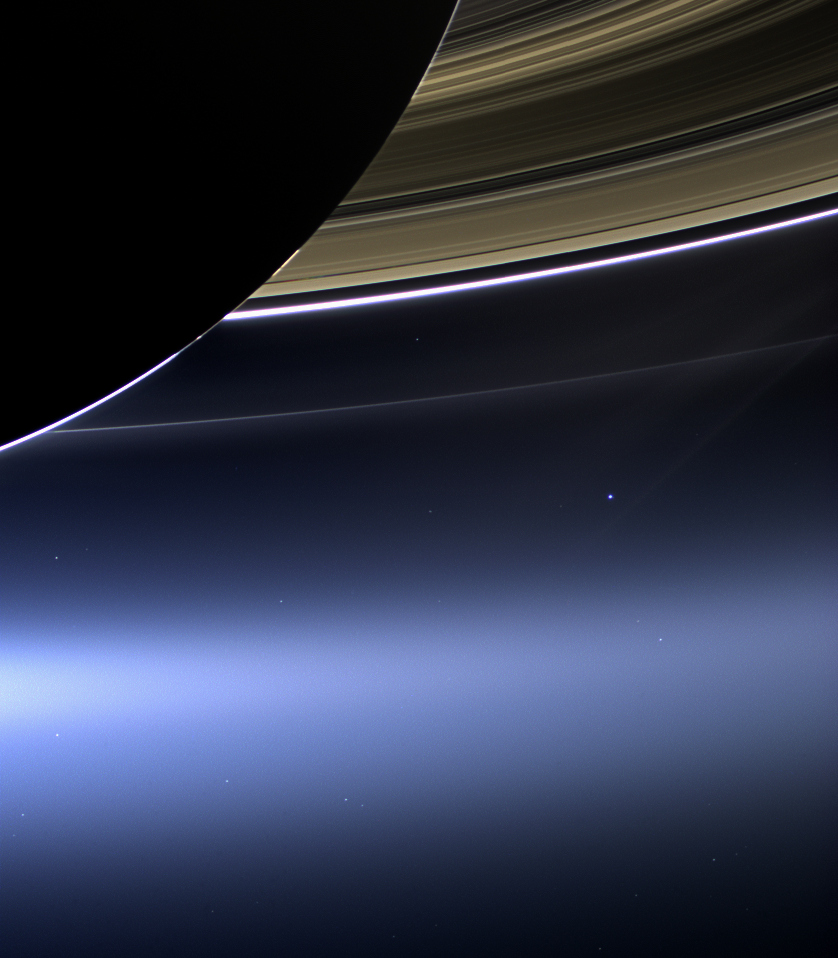Far and Near
ω
Wonders of the world abound
on our earthly stomping ground,
in the seven seas profound,
midst the heavens round us wound.
Images from reaches vast
by astronomers amassed
show in varicolored cast,
cosmic glories unsurpassed,
stories of the great immense,
begging questions why and whence,
scenes stelliferously dense,
bringing past to present tense.
Oh how tantalizing to
lose oneself in starry view
of galactic vision new
where a poet’s words ring true!
Tennyson’s ‘Far—Far—Away’,
penned for Music’s haunting play
with the sounds the words convey
as they whisper, swing and sway,
tells of ‘far’ from past long gone,
murmur from ‘his own life’s dawn’?
breath where ‘doors of death’ go on
through an open curtain drawn?
Whether time or space be meant,
or spacetime together bent,
still, whatever sense is lent,
far’s remote in its intent.
After sunset’s crimson blaze
we may raise a dreamy gaze
in escape from troubled days
to celestial splendors praise.
Will our search of cosmic sphere
teach us to esteem what’s here?
Oft stargazers too I fear
must look far to see the near.
~ Harley White
* * * * * * * * * *
Some sources of poetic inspiration were the following…
Poem ~ ‘Far—Far—Away’ (For Music), by Alfred, Lord Tennyson (1809 – 1892) (last poem)
Full article with various images ~ The Day The Earth Smiled...
Further inspiration derived from the teachings of Nichiren Daishōnin…
“Even though we are in possession of the lotus flower of our Buddha nature just as it has been described, we are intoxicated by the liquor of unenlightenment, so that we are ignorant of its very presence within our bodies. By being beguiled by the murkiness of troublesome worries (bonnō, klesha), we are unawakened as to the real suchness of our own nature. This is like the poor woman who is oblivious of the treasure store in her own house and the kirin or dragon who is irritated by the jewel in his own body, without knowing that it is of worth. At all events, there are hidden things that we do not see, like the Buddha nature in sentient beings or the moon behind the clouds, the gold in the earth, or the flowers inside a tree. But there really is the Buddha nature stored within the hearts of sentient beings.”
~ Nichiren 1222 – 1282) ~ translated by Martin Bradley
Nam Myōhō Renge Kyō means to devote our lives to and found them on (Nam[u]) the Utterness of the Dharma (Myōhō) [entirety of existence, enlightenment and unenlightenment] permeated by the underlying white lotus flower-like mechanism of the interdependence of cause, concomitancy and effect (Renge) in its whereabouts of the ten [psychological] realms of dharmas [which is every possible psychological wavelength] (Kyō).
The reason that we continually recite Nam Myōhō Renge Kyō
Image ~ Earth can be seen as a blue dot underneath the rings of Saturn in this image taken by Cassini on July 19, 2013.
Image description ~ In this rare image taken on July 19, 2013, the wide-angle camera on NASA’s Cassini spacecraft has captured Saturn’s rings and our planet Earth and its moon in the same frame… Earth, which is 898 million miles (1.44 billion kilometers) away in this image, appears as a blue dot at center right; the moon can be seen as a fainter protrusion off its right side… The other bright dots nearby are stars… This is only the third time ever that Earth has been imaged from the outer solar system…

Credit: NASA/JPL-Caltech/Space Science Institute
| Table of Contents |
|